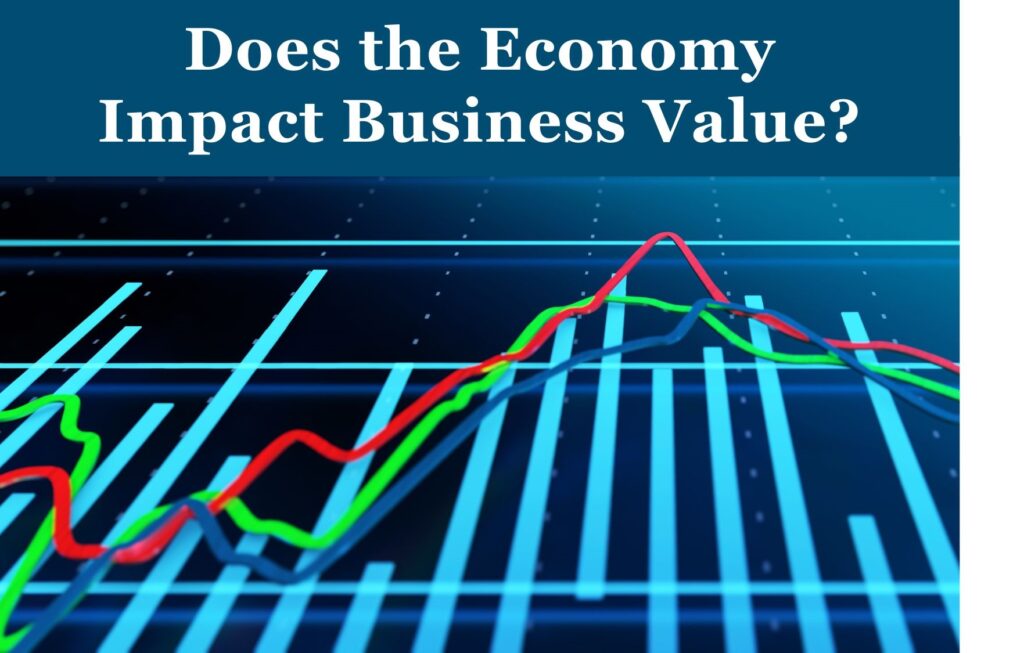There are many day-to-day decisions that we as business owners control and can adjust for; however, one significant issue that is completely out of our control is the general economy. It’s interesting to reflect back over the past two years of business valuations our firm has completed and consider how the more recent economic changes have impacted business value.

The U.S. economy’s long, steady run ended in 2022 as the U.S. Federal Reserve set out to cool growing inflation. In March of 2022 the central bank began a series of 11 increases to the federal funds rate with the last increase occurring in July 2023. Over this 16-month period, the overall result of these increases changed the federal fund rate from 0.25% to 5.5%. This is the rate commercial banks borrow at and lend their excess reserves to each other overnight. The banks make their profit by increasing this rate and re-lending to the borrower. For the business borrower, the very low and very steady rates over the past decade came to an end.
One of the most frequently asked questions we’ve received in the past year is, "How have rising interest rates and the general economic slowdown affected the value of privately owned businesses?"
Given our 50 years of specializing in business valuation and valuing thousands of businesses, we have, as the Farmers Insurance commercial says, “...seen a thing or two.”
The best way to consider the impact of economic change (or any change to a business) and its impact on value, is to consider the impact on the two primary levers that drive business value:
- 1) The expected future cash flows after operations and re-investing in the business’s capacity/efficiency (capital expenditures), and
- 2) The risk of those cash flows occurring as expected. This risk is quantified in a discount rate that is applied to these cash flows to determine the present value of the company.
As the discount rate increases (due to higher risk), value decreases.
Let’s take a look at the impact of more recent economic change on businesses future cash flows and the discount rate.
Economic Impact on Expected Future Cash Flows
Overall, as for the impact of the economy on expected future profits/cash flows, we have witnessed business owners remaining quite bullish about their expected sales growth and profitability in the next one to three years. One exception is the commercial real estate development industry, which is experiencing a slowdown due to the significant increase in the cost of debt, making the required rate of return not attainable.
Owners’ bullish expectations may in part be a rebound from the significant slowdown experienced by most businesses caused by COVID19. Despite the post COVID19 rebound, the clear majority of business owners are continuing to invest in capital expenditures and expect to gain either increased sales or increased efficiencies (margin) as a result of this investment. During times of uncertainty, spending on reinvestment (capital expenditures) in the company is an area where business owners will delay, or stop entirely on such reinvestments. We have not seen such a delay.
What has changed is that few businesses are borrowing for those capital expenditures and instead are using profits or saved cash generated from the government’s PPP (payroll protection program) funding.
Supply chain issues have eased for most industries and while there is certainly pressure on wage increases, businesses have, for the most part, been able to pass on the growing wage expense through increased prices. Finally, the seemingly endless price increases in raw materials and finished goods appear to have eased as well.
Economic Impact on the Discount Rate
As discussed in an earlier blog (5 Ingredients Used for Pricing a Business) the discount rate used to determine the present value of expected future cash flows is the sum of five key components. Two of these components are generally impacted by volatility in the federal funds rate.
The first is the current risk-free rate (think bond rates) and the second is referred to as the equity risk premium, (also referred to as the market risk premium). This equity risk premium measures the additional rate of return required by public company investors, above and beyond the risk-free rate. This equity risk premium is calculated by taking the difference between the expected return on publicly traded investments, less the risk-free rate.
These two factors have increased as a direct result of the increase in borrowing rates but also because of the volatility caused in the economy when it is unknown how deep, or how long, the slowdown might be. The impact of constant chatter as to whether we are headed for a recession also leads to business slowdowns. Despite an individual company’s performance, since the risk-free rate and the equity risk premium have increased, the cash flows will be discounted by a higher rate and therefore result in a lower value than would have been reached two years ago.
Conclusion
Generally, we see future expected cash flows remaining strong and growing. The combination of increasing cash flows and increasing discount rates is somewhat counter balanced, depending upon the specifics of each company. Whether the Feds are successful at implementing a soft landing as compared to a recession remains undecided; however overall, we see privately owned business owners doing very well.
If you would like to discuss a specific business situation please reach out to us through our Contact page or call us at 608-257-2757 and one of us would be happy to talk with you.

